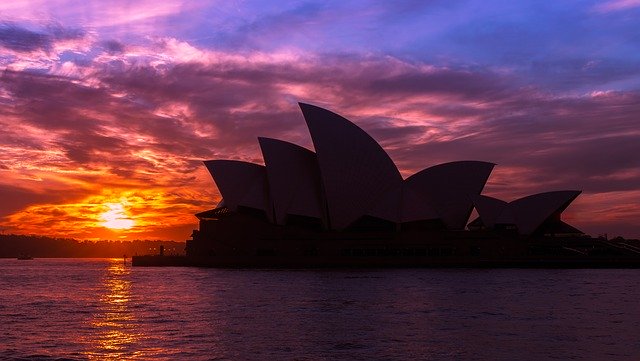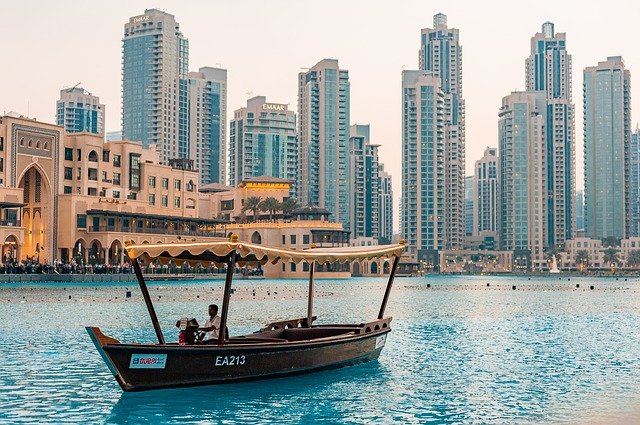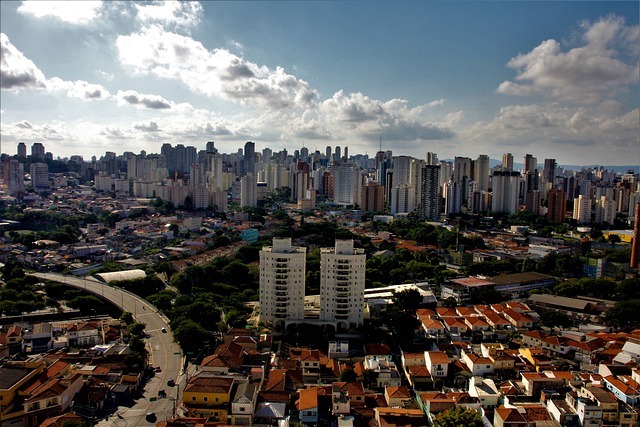Pandemic forces governments worldwide to take unprecedented measures

Borders closure and quarantines: measures taken globally to fight COVID-19. Source: pixabay.com
Due to the fact that the World Health Organization declared COVID-19 a global health emergency, the countries are currently facing the burden of numerous restrictions. In order to slow the virus’ spread, many of them had to close their borders and announce the quarantine.
In this article, PaySpace Magazine Global gathered information about the measures governments worldwide have taken to limit the spread of the coronavirus.
Australia

Australia. Source: pixabay.com
On March 15, the Australian government stated that all the international passengers coming to the country will be urged to isolate themselves for 14 days. Later on March 19, it has been announced that Australia will close its borders to all visitors. However, Australian residents and their close family members will still be able to enter the country, despite the quarantine restrictions.
Although there is no detailed information about the date of termination of restrictions, Prime Minister of Australia says the borders would be closed for six months or more. At the time of writing, there is a total of more than 3,140 confirmed cases, according to Johns Hopkins Coronavirus Resource Center.
Asia

Asia. Source: pixabay.com
China
China announced its first lockdown on January 23 in Wuhan and other cities of Hubei province to keep the center of the COVID-19’s outbreak isolated. Besides, international passengers coming to Wuhan have been forced to go into a 14-day quarantine.
However, since the number of infected has been slightly decreasing lately, the government started to gradually ease the rules and the restrictions.
This way, on March 24, China announced it has lifted travel restrictions in Hubei after months of lockdown.
As of March 27, there are currently almost 81,900 infected active cases in the country.
India
The Indian government announced on March 17 its decision to stop issuing visas to citizens of Germany, France, and Spain for an indefinite period of time. The measures have already been taken towards citizens of China, Japan, South Korea, Italy, and Iran.
Besides, the country implemented a travel ban on all international flight arrivals starting from March 22. Earlier, India has already launched such restrictions on flights to South Korea and Italy until March 25 and March 28, respectively. As of March 27, there is a total of more than 770 confirmed cases.
The United Arab Emirates
The UAE restricted all flights to and from Lebanon, Iraq, Turkey, and Syria from March 17 and until further notice to slow the COVID-19 spread.
From March 19, UAE residents who were abroad were not allowed to pass through the country’s borders for 14 days with further possible extension. Although, UAE citizens are still allowed to enter the country’s territory amid the implemented restrictions.
Later, Dubai-based Emirates Airlines announced the suspension of all passenger flights but will return UAE citizens and diplomats back. According to Johns Hopkins Coronavirus Resource Center, there are nearly 335 confirmed cases in the United Arabic Emirates.
Europe

Europe. Source: pixabay.com
Belgium
There are more than 7,280 confirmed coronavirus cases across Belgium, as of March 27. The country decided to ban non-essential travel to and from Belgium. However, its citizens who are currently abroad will be able to return. Moreover, passengers coming to the country aren’t currently being required to self-isolate for 14 days, unlike in other countries.
Czech Republic
The border closures extended to the Czech Republic, where more than 2,060 cases have been confirmed. The government announced a 30-day state of emergency starting from March 13. The Czech Republic closed its borders for travelers from Belgium, Denmark, France, Italy, Germany, Iran, the Netherlands, Norway, Austria, Spain, Sweden, Switzerland, and the UK.
However, due to the decrease in the number of COVID-19 cases in the Asian region, the Czech Republic lifted the travel ban for China and South Korea on March 23. Although, on that same day, the country shut its borders to Canada, the US, Portugal, Australia, and Israel. Besides, the government revealed it will launch a smart quarantine system soon. It will be able to track the infected people’s movement through the data collected from smartphones and payment cards.
Norway
Norwegian ports and airports have been shut for foreigners from March 16 with a further extension until April 13. Additionally, the government introduced a 20,000 kroner (nearly $1,830) fine or even imprisonment that could be imposed on people not following self-isolation. In Norway, it is permitted to leave the house for a walk since it’s easy to avoid human contact. However, using public transport or going to work or places, where it’s hard to keep a 2-meter distance from other people, is prohibited. There are nearly 3,430 confirmed cases, as of March 27, according to the statistics.
North America

North America. Source: pixabay.com
Canada
From March 16 and until June 30 Canada restricted entry for all foreigners. As to the US, due to the high level of interaction between these two countries, on March 21 Canada imposed a 30-days restriction on non-essential travel at the Canada-US border.
Besides, returning Canadians are mandated to self-isolate during 14 days, according to recently invoked Quarantine Act. Otherwise, they will have to pay a $750,000 fine or even spend 6 months in jail for violating the Act’s rules.
The Canadian government prohibited recently returned travelers from taking public transport to get to their self-isolation places. What is more, they are not allowed to isolate themselves with older people who are at higher risk of catching COVID-19. As of March 27, there are more than 4,045 infected Canadians overall.
The United States
On March 13, President Donald Trump imposed a 30-day travel ban on all non-Americans coming from any of 26 Schengen Area countries. Although, the restriction excludes US citizens, as well as their close family members. It means that the passengers who had been in the Schengen Area countries for the last 14 days are not allowed to enter the US. The American government has also put a ban on non-essential travels over US-Mexico and US-Canada borders on March 20 and March 21, respectively. Meanwhile, Johns Hopkins Coronavirus Resource Center confirmed nearly 86,000 coronavirus cases across the country.
Latin America

Latin America. Source: pixabay
Brazil
On March 19, Brazil joined a growing number of countries restricting the entry of foreigners at their borders. Brazilian government closed its borders to Argentina, Bolivia, Colombia, French Guiana, Paraguay, Peru, and Suriname, following the same measure towards Venezuela. It has been announced that a 15-days restriction will exclude foreigners having permanent residence in Brazil, diplomats and cargo transportation.
Besides, the son of President Jair Bolsonaro, Eduardo, has joined US President Donald Trump in blaming China for spreading the virus on March 19. Neither Eduardo Bolsonaro nor his father refused to apologize to the Chinese.
What is more, the Brazilian President has been significantly criticized for his attitude towards the coronavirus outbreak. During his US visit on March 9, he stated that COVID-19 is nothing more than a mainstream media fantasy. Despite the fact his Press Secretary tested positive for the virus, Mr. Bolsonaro has been meeting his supporters without wearing a mask.
In addition to that, the President urged Brazilian citizens to get to work saying the coronavirus fears are exaggerated.
Besides, the President of Brazil heavily criticized local quarantine and self-isolation restrictions, calling Sao Paulo Governor ‘lunatic’ for imposing a 15-day lockdown in the state. There are over 2,900 confirmed cases, as of March 27, according to the statistics.
Chile
Johns Hopkins Coronavirus Resource Center confirmed slightly more than 1,300 infected active cases across Chile, as of March 27. On March 16, the government declared a 90-day state of catastrophe, prohibiting public gatherings and restricting citizens’ migration across the country with the assistance of the military forces. Besides, on March 18 the country announced the travel ban on all foreigners until further notice.
Nicaragua
As of March 27, there are only 2 confirmed cases across the country. At the time of confirmation of the first infected person, the government hasn’t taken any preventive measures against COVID-19. For instance, there weren’t any travel or school restrictions or nationwide quarantine. However, plenty of local businesses decided to shut down in order to keep their workers and customers safe, despite the government’s silence. Besides, the government stated that it intends to prohibit funerals and wakes for people who won’t survive the coronavirus.
SEE ALSO:








